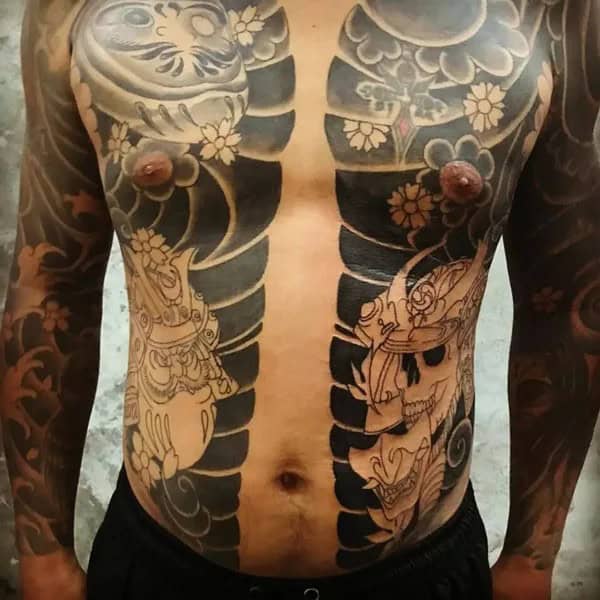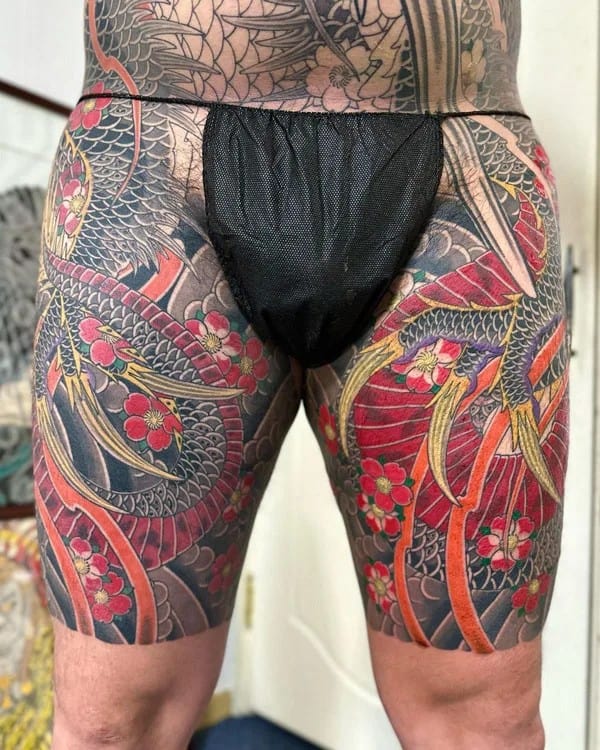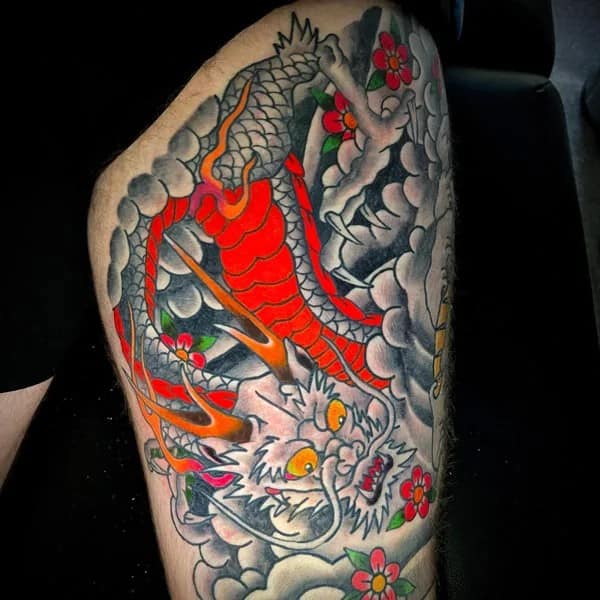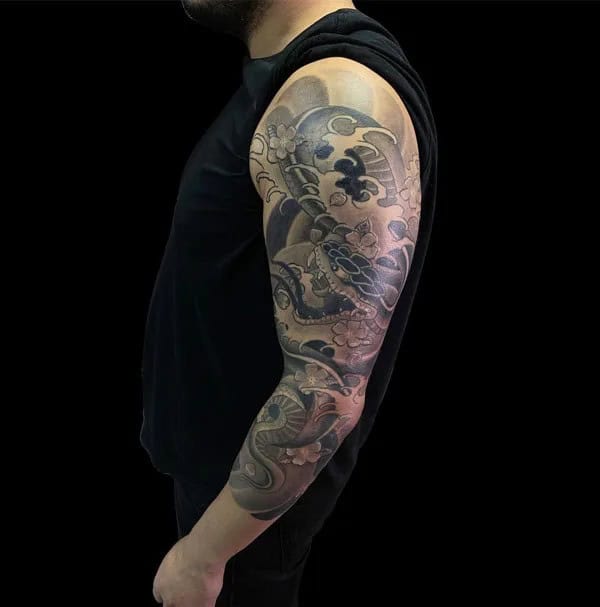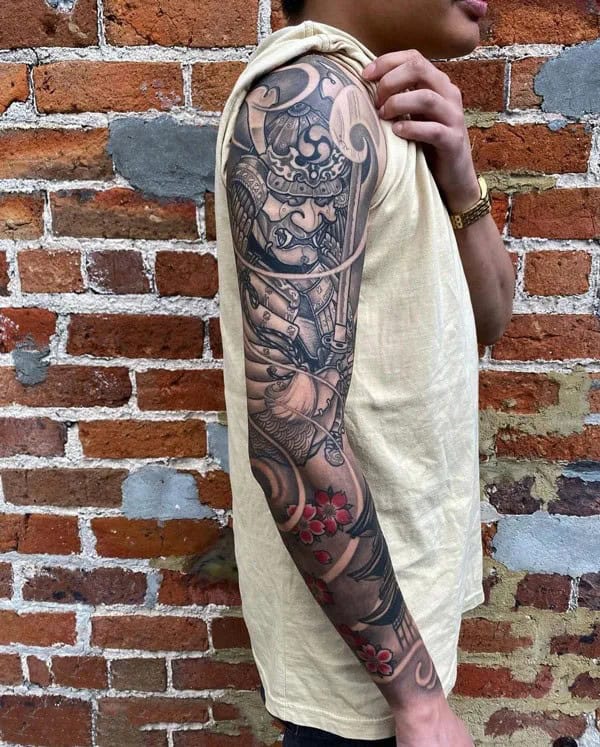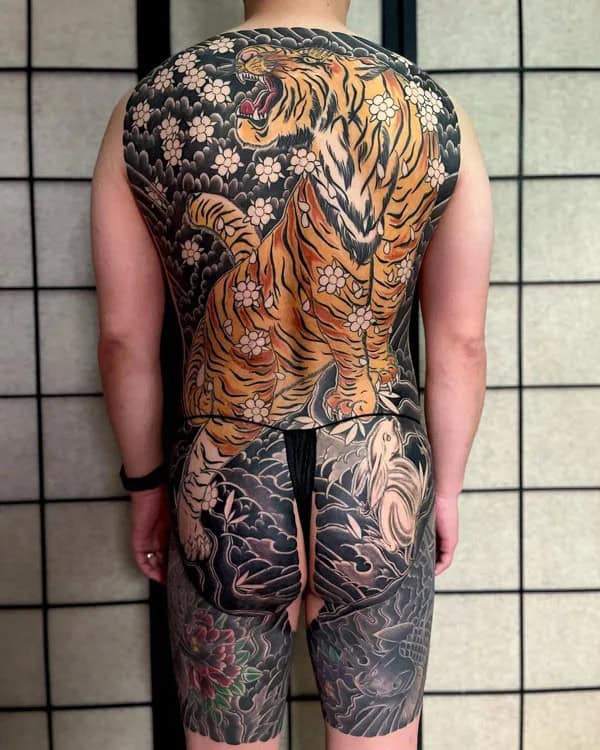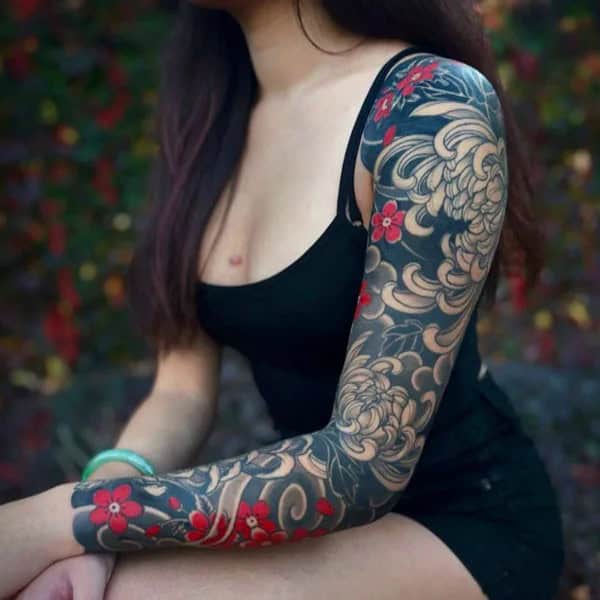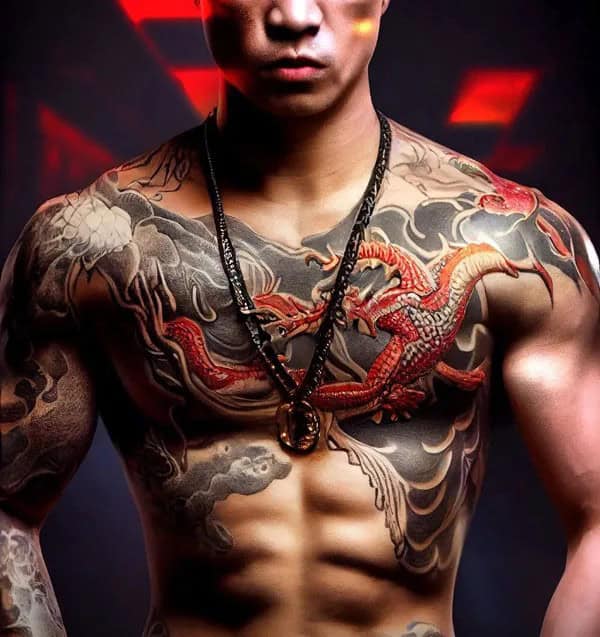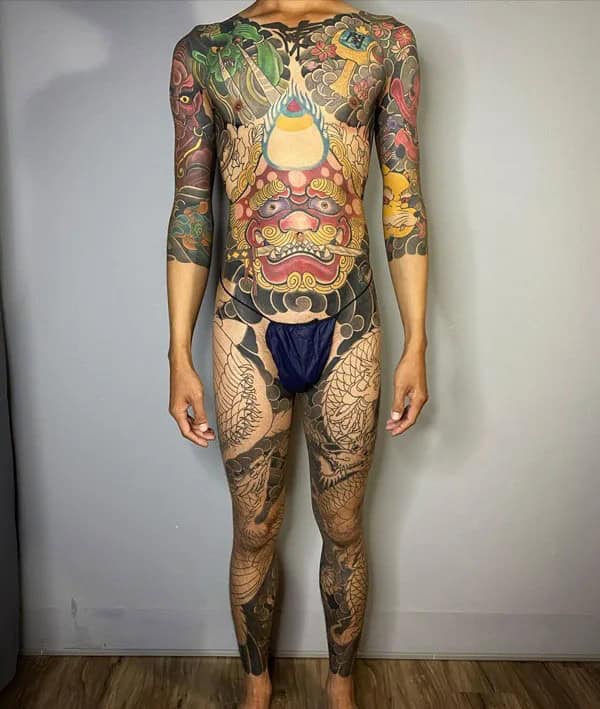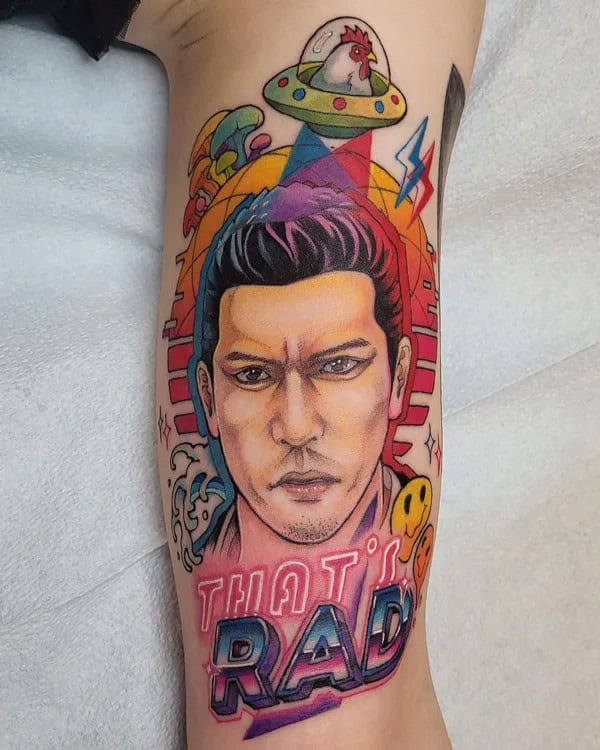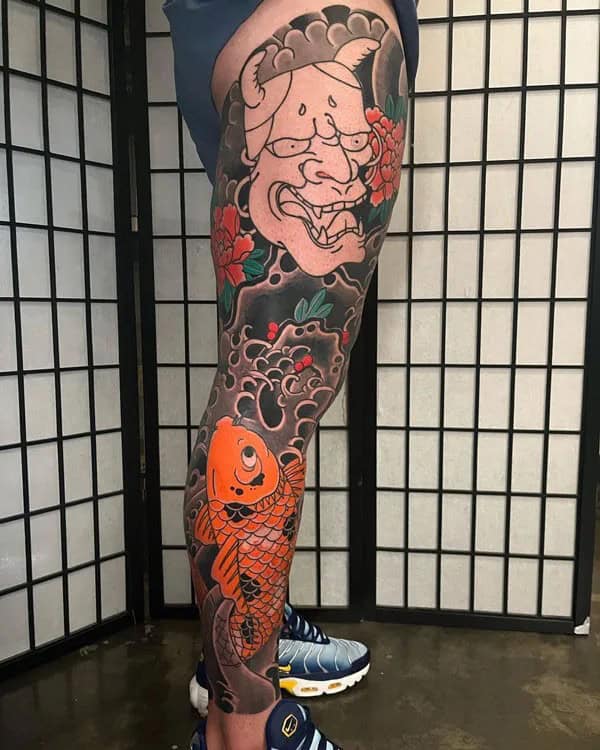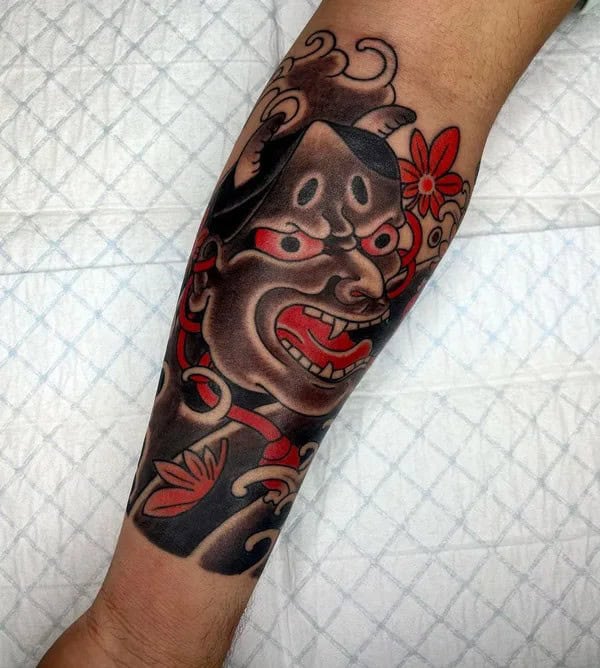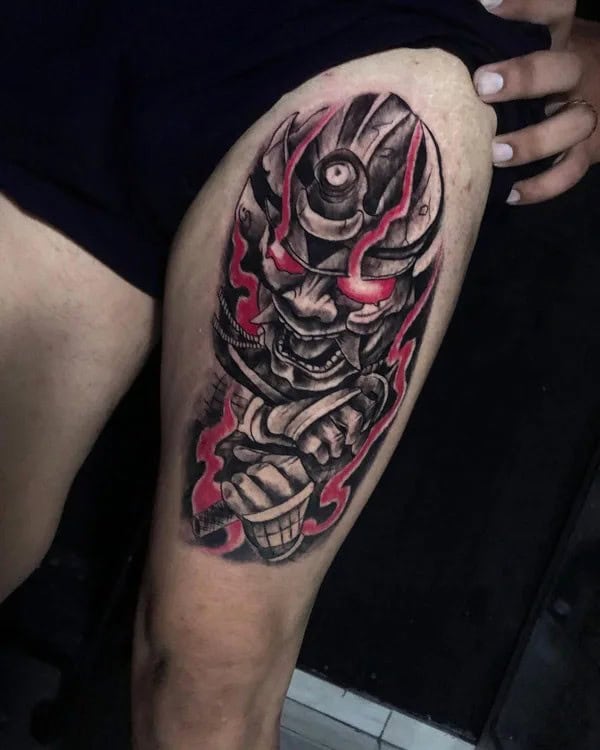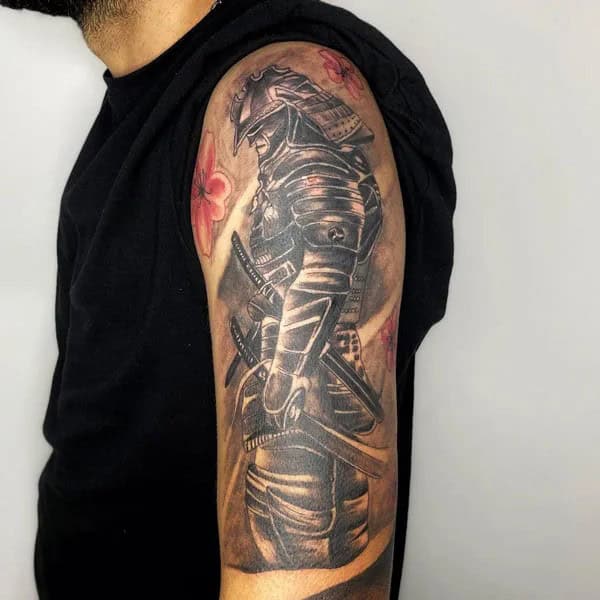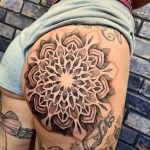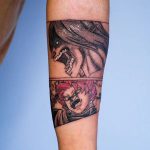Intricately tied to Japan’s Irezumi tradition, the Yakuza has a rich history with tattoos that dates back centuries. The meanings behind these body art pieces are deeply rooted in Japanese culture, art, and spirituality. In fact, getting inked was a rite of passage for many Yakuza gang members in the past, serving as a symbol of their beliefs and values. Today, Japanese tattoos are renowned worldwide, with enthusiasts fascinated by the unique designs and symbolism.
However, what sets these tattoos apart is the complex and often controversial history surrounding the Yakuza, an organization notorious for its involvement in organized crime. As such, it’s crucial to delve into the proper historical context and meanings behind these tattoos before embracing them. This well-researched article aims to provide just that.
Yakuza Tattoos With Interesting History And Background
The Yakuza, Japan’s notorious mafia organizations, have a rich history dating back to the Edo era. Their illicit activities include racketeering, illegal gambling, weapons trading, and more. Traditionally, the Yakuza were viewed as criminals, making it difficult for members to reintegrate into society and secure employment. In response, they developed unique customs, such as physical alterations and tattoos, to distinguish themselves from others.
One practice, known as yubitsume, involves self-amputation as a symbol of regret for disobeying mob rules. To avoid drawing attention to their tattoos in Japan, where ink is often associated with criminality, Yakuza members typically place them on areas that can be covered by clothing. Tattoos often wrap around the body, from ankles to wrists and necklines, allowing the wearer to display palms, toes, and faces without revealing the modifications hidden beneath attire.
Some members even have a small patch of exposed skin on their chest, enabling them to zip up their clothing while still displaying their tattoos. To differentiate themselves from others and convey symbolic messages through their bodies, Yakuza members also adopted agonizing hand-pricked tattoos, known as irezumi. A full-body irezumi serves as a testament to the wearer’s bravery and resilience due to the excruciating process.
Unknown Facts And Slick Meanings Of Yakuza Tattoos
The allure of Yakuza tattoos lies in their mystique, stemming from the intense mystery surrounding them, the painstaking ‘hand-poking’ technique used to apply intricate patterns, and their association with Japan’s criminal underground. Inspired by Japanese culture and mythology, these designs often draw parallels with ancient myths and legends. The Japanese themselves view the Yakuza dialect as mysterious, yet there are no restrictions on what they symbolize or how they’re created.
The Yakuza, a notorious criminal organization, has a long history of adorning their bodies with ornate tattoos, reflecting their values of endurance, suffering, and affection. These metaphorical body piercings have evolved over centuries to become an intricate tattoo culture. Gang members choose emblems based on their symbolic meanings: koi for bravery, dragon for knowledge, tiger for power, and snake for healing.
A crucial aspect of Yakuza tattoos is that they remain discreet in everyday life, with the calf, forearms, arms, necks, and forehead being the only areas left untattooed. Clothing covers any visible inkwork, allowing members to blend into society. Each tattoo design has its own unique history, reflecting the individual’s story and experiences.
While some Yakuza members opt for specific symbols that resonate with their own narratives, many others now choose these tattoos purely for their striking designs. The mystique surrounding Yakuza tattoos continues to captivate young enthusiasts, drawn in by their beauty and intrigue.
Distinctive Yakuza Tattoos Ideas!
For centuries, the Yakuza tattoos remained shrouded in secrecy, reserved exclusively for a select group of individuals. However, with the advent of technology and the internet’s vast reach, this ancient art form has been brought into the spotlight, allowing people from all corners of the world to explore its rich history and design motifs.
As someone who has devoted considerable time to studying Yakuza tattoos, I have sought out the most unique and striking designs from both the past and present to curate a collection that showcases the best of what this iconic style has to offer.
Yakuza Back Tattoo
The Japanese art of Irezumi, famously adopted by the Yakuza, allowed gangsters to brand themselves with distinctive tattoos that served as a badge of membership. The back was a preferred location for these markings, as it could be easily concealed from view.
Irezumi designs often feature traditional motifs like koi fish, dragons, and serpents, which are frequently used by the Yakuza to convey status and affiliation.
On the back, these tattoos can sprawl across the entire surface, showcasing their intricate patterns and vibrant colors.
One of the striking aspects of Irezumi is its use of color variation, with each subject or design element featuring its own unique hue. This blend of colors creates a visually striking effect that adds depth and dimension to the overall piece.
While other designs may also incorporate these techniques, the Yakuza’s signature back tattoos remain a timeless classic in Japanese body art.
Yakuza Dragon Tattoo
The dragon tattoo, an iconic symbol of wisdom, power, and courage, has captivated many individuals worldwide. Its striking appearance makes it a popular choice among men, who often seek to adorn themselves with this attractive design. Moreover, the Yakuza have traditionally incorporated this tattoo into their aesthetic, solidifying its cultural significance. In Eastern cultures, the dragon is often associated with authority, embodying qualities such as knowledge, liberation, and bravery.
Interestingly, European history portrays dragons as malevolent creatures, leading to their extinction. As a result, the meaning of a dragon tattoo can vary greatly depending on one’s personal characteristics and geographical background. The presented image showcases a beautifully rendered dragon tattoo located on the thigh, boasting vibrant colors that draw the eye. Its intricate design reflects traditional techniques, adding to its allure.
Yakuza Sleeve Tattoo
In Japanese culture, cherry blossoms hold a profound significance, symbolizing the fleeting nature of existence. As the blooms fall from the tree and are dispersed by the elements, they vanish into thin air. This ephemeral quality makes them an poignant metaphor for the human experience. For those who appreciate the beauty and symbolism of cherry blossoms, a yakuza-style sleeve tattoo featuring this motif can be a striking addition to one’s body art.
The incorporation of a snake adds an extra layer of meaning, as serpents are deeply rooted in Japanese folklore, representing strength, prophecy, and wisdom. The natural colors used in the tattoo give it a remarkably lifelike quality, with intricate details that add depth and dimension. The design can vary in size depending on the shape of the sleeve, but typically extends up to the forearm, allowing the wearer to conceal or reveal it at will.
Samurai Yakuza Tattoo
The Yakuza’s affinity for samurai culture is deeply rooted in their history and values. As a result, they often incorporate traditional samurai motifs into their tattoos, which serve as a symbol of their commitment to upholding an ethical code of conduct. This design aesthetic harks back to the earliest days of tattooing, with roots in ancient Japanese culture. When it comes to creating a traditional Yakuza-inspired Samurai tattoo like those seen on sleeves, the choice of colors is crucial.
The vibrant hues used in these designs are meant to grab attention and make a statement, adding an extra layer of visual appeal to the overall piece.
Yakuza Tiger Tattoo
Like their majestic namesakes, Japanese tiger tattoos embody strength, bravery, and resilience, qualities deeply rooted in the cultural heritage of Japan. Beyond its imposing physical presence, this traditional design also serves as a powerful talisman, warding off misfortune, disease, and malevolent spirits. The art of Yakuza tattooing has been perfected over centuries, with the tiger being one of the most revered symbols in their repertoire.
In its purest form, the Yakuza tiger tattoo stretches across the back, hips, and thighs, a stunning example of Japanese artistic mastery.
Yakuza Female Tattoo
In stark contrast to the prevalent perception of women involved in organized crime, Yakuza females do not engage in illegal operations with the exception of American mob spouses. Although they play a crucial role in the gang’s operation, handling finances, mediating disputes, and offering emotional support, they are not permitted to actively participate or hold legal membership.
Despite this, some women have chosen to bear the Yakuza symbol as a badge of honor, often adorning their bodies with sleeves, chest pieces, shoulders, arms, or backs, reflecting a deeper connection to the organization’s culture.
Yakuza Chest Tattoo
When it comes to showcasing masculinity, few positions hold more significance than the chest. For many men, adorning their torso with a tattoo is a way to demonstrate confidence and courage – qualities that are often associated with having a strong presence. In fact, among Yakuza enthusiasts, the chest is a particularly popular spot, ranking second only behind the back in terms of preferred placement.
The design and size of these tattoos tend to be influenced by the natural shape of the individual’s chest. While some may opt for a more subtle approach with smaller or more minimalist designs, others may choose to fully cover their chest with vibrant colors and intricate details that extend all the way up to the arms and abdomen.
Full Body Yakuza Tattoo
The full-body Yakuza tattoo, featuring a samurai figurine, embodies the spirit of a brave warrior, reflecting the core values of Samurai tenets such as fidelity, decisive action, fortitude, and honor. These principles are deeply rooted in Buddhist and Confucian philosophies that have been absorbed by the Yakuza over time. As guardians of traditional Japanese customs, the Yakuza’s long-standing adherence to these Samurai ideals has earned them a reputation for protecting cultural heritage.
This striking tattoo, spanning the entire body in a vibrant array of colors, is characterized by its visual impact and sprawling design, making it a truly distinctive piece.
Yakuza Game Tattoo
In the world of Sega’s Yakuza franchise, Goro Majima stands out as a beloved character. His iconic face and in-game elements are cleverly woven into this tattoo design, making it a unique tribute to the popular video game series. As gaming culture continues to evolve, fans are increasingly opting for tattoos that reflect their passions, including those inspired by their favorite games.
Yakuza Leg Tattoo
The Yakuza leg tattoo often incorporates a koi fish design, which holds significance in Japanese culture as a symbol of good fortune and success. In mythology, koi are renowned for their ability to navigate waterfalls and swim against currents, embodying the qualities of determination and perseverance. However, this resilience may also allude to having overcome obstacles or adversity.
As such, it’s not uncommon for men to choose the chest as a prime location for these tattoos, likely due to the association with strength and character.
Yakuza Forearm Tattoo
While traditional Yakuza members sought to conceal their tattoos beneath clothing, opting for areas less susceptible to exposure, such as the back or shoulders, modern enthusiasts of Japanese gang culture have opted for more visible placements. The forearm, in particular, has become a popular spot for showcasing Yakuza-inspired designs, despite the limited real estate available.
This shift towards displaying these intricate and often large-scale tattoos is likely driven by a desire to flaunt one’s aesthetic appreciation for the culture rather than mere concealment.
Yakuza Thigh Tattoo
Japanese mask designs are renowned for their versatility, adorning various performances, festivities, and religious ceremonies. The intricate patterns on these masks not only evoke a sense of fascination but also serve as popular tattoo inspirations. Despite its unconventional appearance, the design is steeped in symbolism, representing godspeed and protection against evil forces.
Additionally, it may allude to a woman consumed by passion and devotion, making it a thought-provoking and intriguing tattoo concept.
Yakuza Arm Tattoo
The allure of Yakuza tattoos lies in their rugged appeal, particularly among men. The iconic Samurai design is a clear favorite, embodying qualities like strength, patience, and valor. When showcased on the arms, these designs leave a lasting impression. While Yakuza tattoos offer more than just this traditional motif, many enthusiasts still crave the unique characteristics of this style. There’s something captivating about sporting a tattoo that pays homage to Japanese culture.
Not only is it a testament to tradition, but also an opportunity to express individuality. If you’re considering a Yakuza-inspired tattoo and want to gain a deeper understanding of the process, check out the accompanying video for insight.
